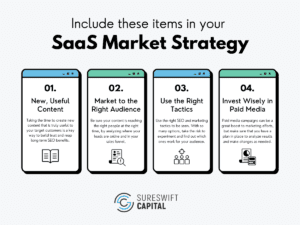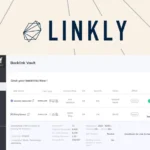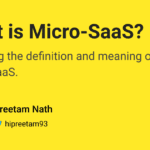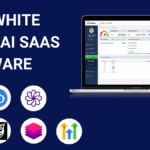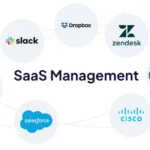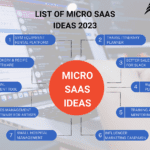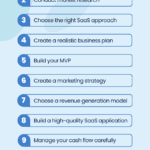A SaaS marketing strategy focuses on attracting, converting, and retaining customers for software-as-a-service products. It leverages digital channels and customer-centric tactics.
Effective SaaS marketing requires a clear understanding of the target audience and their pain points. Content marketing, SEO, and social media are crucial elements. Offering free trials or freemium models can attract potential customers. Email campaigns and personalized messaging help nurture leads and boost conversions.
Tracking performance metrics, such as customer acquisition cost (CAC) and lifetime value (LTV), ensures data-driven decisions. Collaboration between marketing and sales teams enhances overall efficiency. Building trust through customer testimonials and case studies also strengthens credibility. Adapting strategies based on feedback and market trends is essential for long-term success.
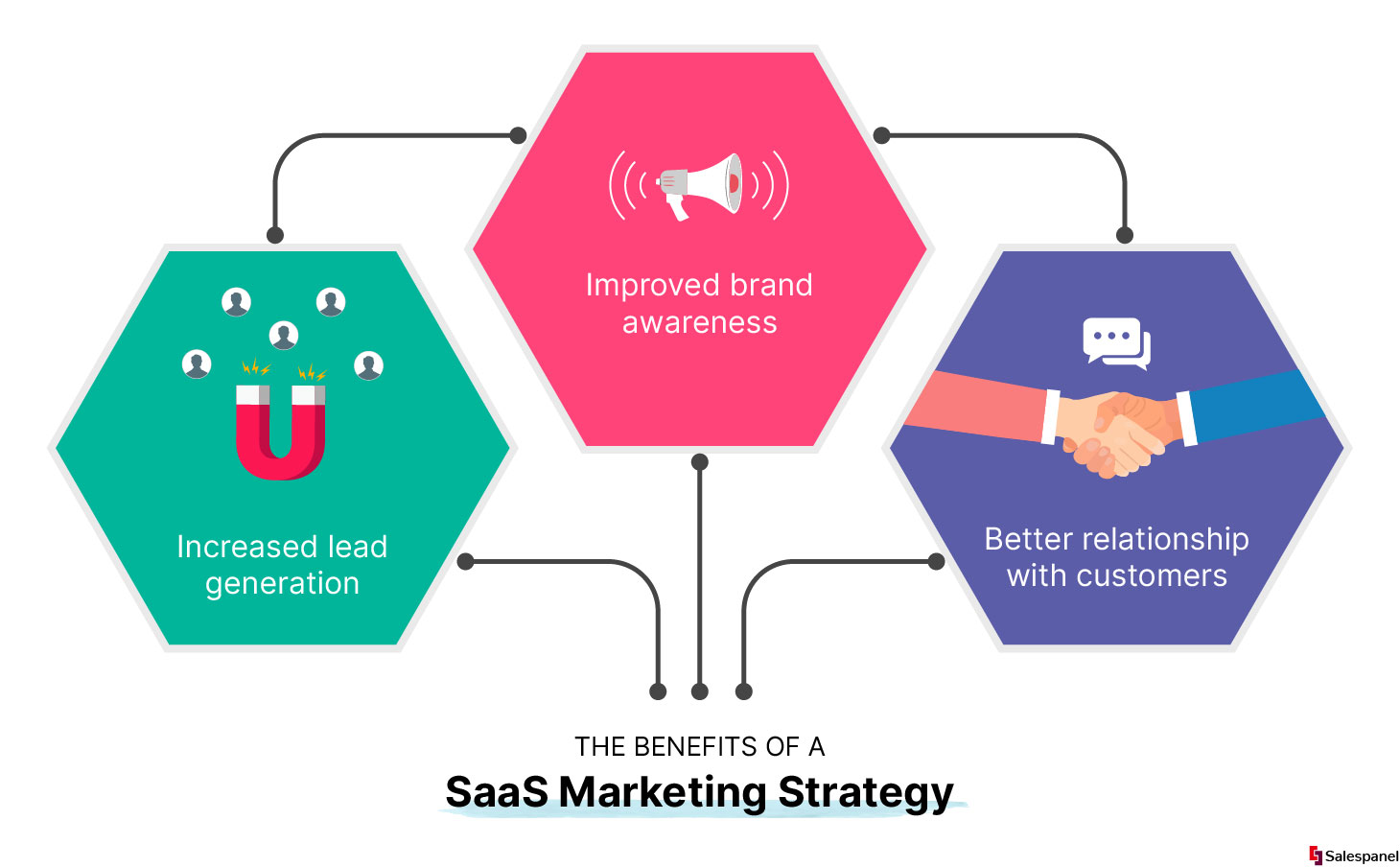
Credit: salespanel.io
The Saas Landscape
The SaaS (Software as a Service) landscape is constantly evolving. Businesses now prefer cloud-based solutions. This shift offers flexibility and cost savings. Understanding this landscape is key to effective marketing strategies. Below, we explore key aspects of the SaaS market.
Growth Of Cloud-based Solutions
The growth of cloud-based solutions is rapid. Many companies are moving to the cloud. This trend shows no signs of slowing down. Here are some key drivers of this growth:
- Cost Efficiency: Cloud solutions reduce hardware costs.
- Scalability: Easily scale up or down based on needs.
- Accessibility: Access from anywhere with an internet connection.
These factors make cloud solutions appealing. Businesses can save money and improve efficiency. This is crucial in a competitive market.
Challenges In Saas Marketing
SaaS marketing comes with its own set of challenges. Identifying and addressing these issues is vital. Here are some common challenges:
| Challenge | Explanation |
|---|---|
| High Competition | Many SaaS companies compete for the same audience. |
| Customer Retention | Keeping customers loyal is often difficult. |
| Complex Sales Cycle | Convincing clients to switch can take time. |
Overcoming these challenges requires a strategic approach. Focus on building strong relationships with customers. Offer value at every stage of the customer journey.
Defining Your Target Market
Defining your target market is crucial for any SaaS marketing strategy. Knowing who your ideal customers are helps tailor your marketing efforts. This increases the chances of converting leads into loyal users.
Identifying Ideal Customers
To begin, identify your ideal customers. These are individuals or businesses who will benefit the most from your product. Look at your current customer base for insights. Use their demographics, behavior, and feedback to create a profile.
- Demographics: Age, gender, income, education level.
- Behavior: Usage patterns, purchase history, feedback.
- Psychographics: Interests, values, lifestyle.
This information helps build a detailed customer persona. A persona guides your marketing strategies and ensures they are effective.
Market Segmentation Techniques
Market segmentation divides your broad target market into smaller groups. Each group has specific needs and characteristics. This allows you to customize your marketing approach for each segment.
Common segmentation techniques include:
- Geographic Segmentation: Based on location, such as city, state, or country.
- Demographic Segmentation: Based on age, gender, income, and education.
- Behavioral Segmentation: Based on user behavior, such as usage frequency and purchasing habits.
- Psychographic Segmentation: Based on lifestyle, interests, and values.
| Segmentation Type | Criteria |
|---|---|
| Geographic | City, State, Country |
| Demographic | Age, Gender, Income, Education |
| Behavioral | Usage Frequency, Purchasing Habits |
| Psychographic | Lifestyle, Interests, Values |
Using these techniques, you can better understand your market. This leads to more precise and effective marketing strategies.
Crafting A Unique Value Proposition
Creating a Unique Value Proposition (UVP) is crucial for SaaS marketing. Your UVP tells potential customers why they should choose your product. It highlights what makes your software different and better.
Articulating Benefits Over Features
Focus on the benefits your SaaS product provides. Explain how it solves problems. Avoid listing features alone. Instead, tell users how these features help them.
- Feature: Real-time data analytics
- Benefit: Make quick decisions based on live data
Use simple language. Make sure your benefits are clear and relatable. For instance, say “Save time with automated reports” instead of “Automated reporting feature.” This approach keeps the user at the center.
Standing Out From Competitors
Analyze your competitors. Understand what they offer. Identify gaps in their UVP. Highlight what makes your product unique. Use these differences to your advantage.
| Competitor | Feature | Our Advantage |
|---|---|---|
| Competitor A | Basic analytics | Advanced, customizable reports |
| Competitor B | Manual updates | Automatic, real-time updates |
Highlight your unique features and benefits. Make it clear why your product is the better choice. Ensure your messaging is consistent across all platforms.
Communicate your UVP clearly on your website, ads, and emails. Make sure it resonates with your target audience. This will help you stand out and attract more customers.
Content Marketing Mastery
Content marketing is key for SaaS companies. It builds trust and educates customers. The right strategy can convert visitors into loyal users. Two essential parts are educational content creation and leveraging SEO.
Educational Content Creation
Creating educational content is vital. It helps users understand your product. This could be blog posts, whitepapers, or how-to guides. Your content should solve user problems.
Use clear, simple language. Avoid technical jargon. Always include real-world examples. This makes your content relatable.
- Write step-by-step tutorials.
- Include screenshots and videos.
- Create infographics for complex ideas.
Regularly update your content. Ensure it's current and accurate. This builds trust and authority.
Leveraging Seo For Visibility
SEO boosts your content's visibility. Use target keywords in your titles and headers. This helps search engines find your content.
Include keywords naturally in your text. Overuse can hurt your ranking. Use tools like Google Keyword Planner. Find the best keywords for your niche.
| SEO Element | Best Practice |
|---|---|
| Title Tags | Include primary keyword |
| Meta Descriptions | Summarize content with keywords |
| Header Tags | Use H1, H2, H3 tags |
Backlinks are important too. Get links from high-authority sites. This improves your site's credibility.
Optimize images. Use descriptive file names and alt text. This helps with image search results.
Leveraging Social Media
Leveraging social media is essential for a successful SaaS marketing strategy. Social media platforms enable you to reach your target audience effectively. They help in building brand awareness and driving user engagement. In this section, we will explore how to choose the right platforms and build engaging campaigns.
Choosing The Right Platforms
Not all social media platforms are the same. Each has unique features and user demographics. Picking the right platform is crucial for your SaaS marketing success.
Consider these factors when choosing social media platforms:
- Target Audience: Identify where your audience spends their time.
- Platform Features: Understand the tools and features each platform offers.
- Content Type: Match your content to the platform's strengths.
Here is a quick comparison of major platforms:
| Platform | Best For | User Demographics |
|---|---|---|
| Community Building | Wide age range, 18-65 | |
| B2B Marketing | Professionals, 25-50 | |
| Real-time Updates | Young adults, 18-35 | |
| Visual Content | Teens and young adults, 13-30 |
Building Engaging Campaigns
Creating engaging campaigns is vital for capturing your audience's attention. Focus on quality content and interaction.
Follow these steps to build engaging campaigns:
- Define Goals: Set clear objectives for your campaigns.
- Create Quality Content: Develop content that is valuable and interesting.
- Use Visuals: Incorporate images, videos, and infographics.
- Engage with Audience: Respond to comments and messages promptly.
- Analyze Performance: Track metrics and adjust strategies as needed.
Here are some tips for creating engaging content:
- Storytelling: Share stories that resonate with your audience.
- User-generated Content: Encourage users to create and share content.
- Interactive Posts: Use polls, quizzes, and Q&A sessions.

Credit: blog.hubspot.com
Email Marketing Strategies
Email marketing is a vital part of any SaaS marketing strategy. It drives engagement and nurtures leads. You can boost your SaaS business with effective email marketing techniques.
Personalization And Segmentation
Personalization makes your emails relevant and engaging. Address your subscribers by their first names. Use dynamic content based on their preferences. This approach makes the recipient feel special. It can lead to higher open and click rates.
Segmentation divides your email list into smaller groups. Each group shares common characteristics. These could be demographics, behavior, or purchase history. By segmenting, you can tailor your messages. This ensures that each segment gets content that resonates with them.
Example of Segmentation:
| Segment | Content Type |
|---|---|
| New Subscribers | Welcome Emails |
| Trial Users | Feature Highlights |
| Paying Customers | Product Updates |
Creating Effective Email Funnels
Email funnels guide your subscribers through a journey. They start as leads and become loyal customers. Each stage of the funnel should have a specific goal. This keeps the subscriber engaged and moving forward.
- Awareness Stage: Introduce your SaaS product. Share how it solves problems.
- Consideration Stage: Provide detailed information. Include case studies and testimonials.
- Decision Stage: Offer a trial or a demo. Highlight the benefits of becoming a customer.
- Retention Stage: Keep in touch with existing customers. Send product updates and helpful tips.
Creating an effective email funnel involves clear goals and strategic content. This helps convert leads into paying customers.
Utilizing Paid Advertising
Utilizing paid advertising is a powerful strategy for SaaS marketing. It helps reach a wider audience quickly. This approach can drive more traffic to your site. Below, we explore some essential tactics for maximizing paid advertising effectiveness.
Optimizing Ad Spend
Optimizing ad spend ensures you get the best return on investment. Start by setting a clear budget. Allocate funds to high-performing ads. Use A/B testing to find the most effective ads. Focus on ads that offer the highest click-through rates.
- Set a clear budget
- Allocate funds wisely
- Use A/B testing
- Focus on high click-through rates
Regularly review your ad performance. Adjust your budget based on these reviews. This will ensure you are not wasting money.
Retargeting And Conversion Tracking
Retargeting helps bring back visitors who did not convert. Use tracking pixels to monitor their behavior. Show these visitors tailored ads. This increases their chances of returning to your site.
Conversion tracking is also crucial. It helps measure the success of your ads. You can see which ads lead to sign-ups or purchases. Use this data to refine your strategy.
| Strategy | Benefit |
|---|---|
| Retargeting | Brings back lost visitors |
| Conversion Tracking | Measures ad success |
Both retargeting and conversion tracking are essential for a successful SaaS marketing strategy. They ensure that every dollar spent yields the best possible results.
Conversion Rate Optimization
Conversion Rate Optimization (CRO) is vital in SaaS marketing. It focuses on turning website visitors into paying customers. By optimizing your site, you improve the chances of conversion.
A/b Testing For Better Results
A/B Testing involves comparing two versions of a webpage. The goal is to see which performs better. This method helps identify what appeals most to your users.
Create two versions of your landing page, A and B. Change one element at a time, such as the headline, call-to-action, or image. Track which version converts more visitors. Repeat this process to continually improve your site.
Use tools like Google Optimize or Optimizely for A/B testing. These tools provide insights and analytics. They help you make data-driven decisions.
Improving User Experience
A good user experience (UX) keeps visitors on your site. It makes them more likely to convert. Focus on making your site easy to navigate. Ensure it loads quickly and looks good on all devices.
Use clear and concise language. Avoid jargon and long sentences. Make sure your call-to-action buttons stand out. Use contrasting colors and large fonts.
Collect feedback from users. Use surveys or feedback forms. Understand their pain points and improve accordingly.
Here’s a simple table to guide your UX improvements:
| Aspect | Improvement |
|---|---|
| Navigation | Simplify the menu |
| Loading Speed | Optimize images |
| Mobile Experience | Responsive design |
| Call-to-Action | Use contrasting colors |
By focusing on these areas, you enhance your site's UX. A better experience leads to higher conversion rates.
Customer Success And Retention
Customer success and retention are key components of a successful SaaS marketing strategy. Ensuring customers are happy and stay with your service is crucial. This involves implementing effective onboarding processes and measuring customer satisfaction regularly.
Implementing Onboarding Processes
Effective onboarding is vital for customer success. It helps users understand your product quickly and efficiently. Here are some steps to create a robust onboarding process:
- Welcome Emails: Send a series of welcome emails to guide new users.
- Tutorials and Guides: Offer tutorials and guides to help users navigate your product.
- Customer Support: Provide easy access to customer support for any queries.
- Feedback Collection: Collect feedback to improve the onboarding experience.
| Onboarding Step | Purpose |
|---|---|
| Welcome Emails | Introduce the product and its features |
| Tutorials and Guides | Help users understand how to use the product |
| Customer Support | Assist users with any issues |
| Feedback Collection | Gather insights to improve the process |
Measuring Customer Satisfaction
Measuring customer satisfaction helps you understand how happy your users are. This can be done through various methods:
- Surveys: Use surveys to ask customers about their experience.
- Net Promoter Score (NPS): Measure customer loyalty with NPS.
- User Activity: Track user activity to gauge satisfaction levels.
- Customer Reviews: Encourage customers to leave reviews and testimonials.
Regularly analyzing these metrics will help you identify areas for improvement. By focusing on customer success and retention, you ensure long-term growth for your SaaS business.
Data-driven Decision Making
Data-driven decision making is crucial for successful SaaS marketing strategies. It allows you to make informed choices and optimize your efforts. This approach uses data to guide your marketing decisions, ensuring that every action is backed by solid evidence.
Key Metrics To Track
Tracking the right metrics can significantly impact your SaaS marketing success. Here are some key metrics to focus on:
- Customer Acquisition Cost (CAC): This measures the cost to acquire a new customer.
- Customer Lifetime Value (CLTV): This predicts the total revenue from a customer over their lifetime.
- Monthly Recurring Revenue (MRR): This tracks the predictable revenue generated monthly.
- Churn Rate: This measures the percentage of customers who cancel within a given period.
- Conversion Rate: This tracks the percentage of visitors who become paying customers.
Adjusting Strategy Based On Insights
Data insights are crucial for refining your strategy. Here’s how you can adjust based on what you learn:
- Analyze Customer Behavior: Identify patterns and trends in customer actions.
- Refine Target Audience: Adjust your target based on demographic and behavioral data.
- Optimize Marketing Channels: Allocate more resources to high-performing channels.
- Personalize Campaigns: Use data to tailor your messages and offers.
- Test and Iterate: Continuously test different strategies and make adjustments.
By focusing on data-driven decision making, you can significantly improve your SaaS marketing strategy. This will lead to better results and a higher return on investment.
Partnerships And Collaborations
Partnerships and collaborations can supercharge your SaaS marketing strategy. By joining forces with other companies, you can reach new audiences and increase your brand's credibility. These alliances can offer mutual benefits and create new opportunities for growth. Let's explore some key areas to focus on.
Building Strategic Alliances
Building strategic alliances involves partnering with companies that complement your services. These partners should share similar goals and values. This can help in creating a seamless customer experience and boosting your brand's trustworthiness.
- Identify potential partners in your industry.
- Evaluate their market presence and reputation.
- Discuss shared objectives and mutual benefits.
A well-chosen partner can open doors to new customer segments. This can lead to increased lead generation and higher conversion rates. Make sure to formalize the partnership with clear terms and conditions.
Co-marketing Opportunities
Co-marketing opportunities allow both companies to leverage each other's strengths. This can include joint webinars, shared blog posts, or combined social media campaigns. Co-marketing can effectively double your reach without doubling your costs.
| Co-Marketing Activity | Benefits |
|---|---|
| Joint Webinars | Engages both audiences, shares expertise |
| Shared Blog Posts | Increases content reach, boosts SEO |
| Combined Social Media Campaigns | Enhances online presence, expands reach |
When planning co-marketing activities, set clear goals and KPIs. This will help in measuring the success of the collaboration. Always ensure that the content is valuable and relevant to both audiences.

Credit: foundationinc.co
Scaling Your Saas Marketing Efforts
Scaling your SaaS marketing efforts is crucial for growth. Efficient strategies help you reach more users and improve ROI. With the right approach, your business can expand rapidly.
Automating Marketing Processes
Automation can save time and resources. It allows your team to focus on critical tasks.
- Automate email campaigns using tools like Mailchimp or HubSpot.
- Use CRM software to track customer interactions and leads.
- Set up automated social media posts using platforms like Hootsuite.
Automated systems ensure consistency. They also help in gathering valuable data for analysis.
Hiring And Training The Right Team
Your team is your biggest asset. Hiring and training the right people is essential.
| Role | Skills |
|---|---|
| Content Marketer | SEO, Copywriting, Analytics |
| Social Media Manager | Engagement, Creativity, Trends |
| Data Analyst | Data Interpretation, Reporting |
Training is equally important. Offer regular workshops and courses.
- Invest in online courses for continuous learning.
- Provide mentorship programs within your organization.
- Encourage team members to attend industry conferences.
Having the right team can accelerate your scaling process. It ensures that all strategies are effectively implemented.
Frequently Asked Questions
What Is Saas In Marketing Strategy?
SaaS in marketing strategy refers to using cloud-based software to deliver marketing tools and services. This approach enhances scalability, accessibility, and cost-efficiency. SaaS solutions help businesses manage campaigns, analyze data, and automate tasks. It enables real-time updates and collaboration, streamlining marketing efforts.
How Do I Create A Saas Marketing Plan?
To create a SaaS marketing plan, define your target audience, set clear goals, develop a content strategy, optimize for SEO, and track performance metrics.
What Is Saas Product Marketing?
SaaS product marketing promotes software-as-a-service products to attract, convert, and retain customers. It uses digital strategies like content marketing, SEO, and social media.
What Does Saas Stand For In Marketing?
SaaS stands for Software as a Service in marketing. It refers to cloud-based applications delivered over the internet. Businesses use SaaS for cost-effective, scalable solutions.
Conclusion
Crafting a strong SaaS marketing strategy is essential for growth. Focus on understanding your audience and leveraging data. Utilize content marketing, SEO, and social media to drive engagement. Experiment with different tactics and continuously refine your approach. Stay adaptable to market changes for long-term success.
